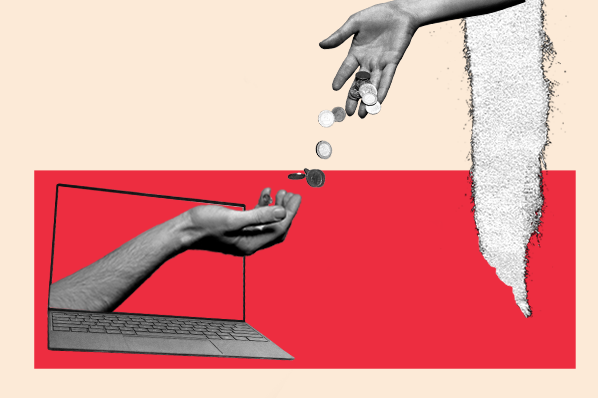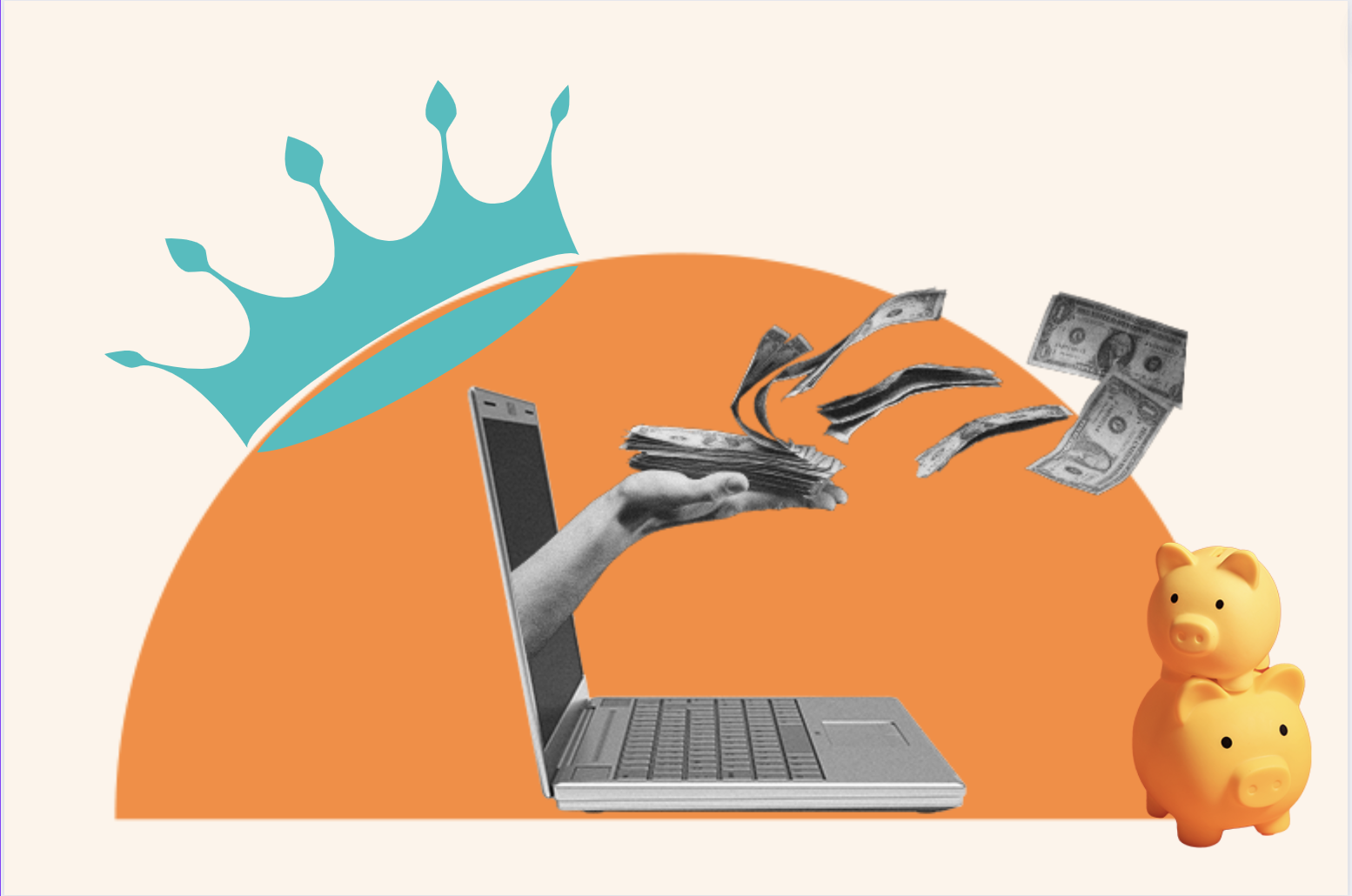To run a successful business, you have to make sure your customers are satisfied and as a result, come back for more. Focusing on customer retention is a solid way to ensure your business is successful — and these customer retention statistics demonstrate why.
Take Sweetwater, the largest online retailer of musical instruments and pro audio equipment in America, for example. As a professional bass player and member of a touring band, I’ll never shop anywhere else for gear. But why?
There are many other places where I can purchase new strings, including brick-and-mortar stores and Amazon, where I can often get what I need faster and cheaper. The difference is the exceptional level of customer service that Sweetwater maintains.
Moments after placing an order, I can expect a phone call from my personal Sweetwater representative (Nick, I’m looking at you) to confirm my order and ask if I have any questions. Sweetwater’s representatives are always genuinely excited to chat with me and learn about the projects I’m working on.
It feels like chatting with a friend invested in my success, not someone who wants to sell me something. Sometimes, Nick will call me out of the blue to ask how my tour is going or congratulate me on releasing a new song. Oh, and did I mention that every order comes with a complimentary bag of candy?

Sweetwater’s exceptional customer service is the reason the company has retained me as a customer for many years and will continue to. The good news? You can do the same with your customers.
Acquiring new customers is essential, of course. However, retaining the customers you already have is easier and more cost-effective than winning new ones. Not to mention that existing customers spend more, buy more often, and generate referrals.
If you need only one reason to prioritize customer retention, consider this: Only a 5% increase in customer retention can increase company revenue by 25-95%. Read on for 50 customer retention statistics that will inspire you to treat customers right to keep them coming back for more.
Table of Contents
- Customer Retention Statistics
- Loyalty Statistics
- Churn Rate Statistics
- Customer Experience and Support Statistics
Customer Retention Statistics
-
As many as 44% of businesses fail to measure their retention rate.
-
Average retention rates differ significantly among industries. Here's how they break down:
-
Insurance: 84%
-
Banking: 75%
-
Retail: 63%
-
Hospitality: 55%
-
Fintech: 37%
-
SaaS: 35%
-
Media: 25%
-
Edtech: 4%
-
In many industries, the top five players on the market have an average customer retention rate of 94%, according to Survey Sparrow.
-
Acquiring new customers is five times more expensive than retaining existing customers.
-
Regarding factors that impact customer retention, 89% of companies admit excellent customer service is critical.
-
There is a 60-70% chance of selling to an existing customer.
-
With new customers, the chance of closing a sale is just 5-20%.
-
Brands use two main methods for customer retention — mobile apps and email marketing — used by 44% and 52% of businesses, respectively.
-
Price matters to customers — 78% say they look for a fair price when selecting a company to buy from.
-
In fact, over half (53%) of consumers admit that discounts and loyalty points make them stay with a brand longer.
-
According to Yieldify's "Personalization After COVID-19" report, customer retention has become the top goal for e-commerce websites, standing at 59%. It overtook conversion (55%) and acquisition (45%).
Loyalty Statistics
-
When asked in a survey about what "customer loyalty" means, 74% of respondents said it's about feeling appreciated and understood rather than receiving special offers. 64% also mentioned that they are willing to spend more on a brand that remembers them and offers a personalized experience.
-
In a HubSpot survey, 77% of respondents said that a business having an excellent product or service that meets their needs is the number one factor that inspires them to stick around.
-
Customer-centric companies are 60% more profitable than companies that aren't.
-
The COVID-19 pandemic caused 3 out of 4 Americans to change their shopping habits. 73% of US buyers who switched brands plan to stay with them.
-
50% of marketers now create content to generate leads, strengthen bonds with clients, and boost retention.
-
Loyalty points are proving to be an effective strategy for businesses. A study by Visa and Bond found that 64% of loyalty program participants shop more frequently and spend more to boost their point earnings.
-
86% of loyal customers will recommend the brand to their friends and family, while 66% will write a positive online review after a good experience.
-
74% of customers mention product quality as the main factor that keeps them loyal to a brand, followed by value for money.
-
One in four customers will pay up to 10% more in almost every industry if they know they’ll receive excellent customer service.
-
60% of HubSpot survey respondents told us that representatives responding quickly and bringing quick solutions is the #1 customer service factor that drives them to make repeat purchases.
-
Consumers said engaged and enthusiastic reps are the second most influential service factor in inspiring customer loyalty.
-
Existing customers are 50% more likely to try your new product and 31% more likely to spend more on their average order value.
-
66% of salespeople say the highest quality leads come from existing customers.
.webp?width=650&height=333&name=favorites%20(1).webp)
-
If a customer trusts a brand, then as many as 62% are likely to stay loyal.
-
96% of buyers mention customer service as the primary factor behind loyalty.
-
Being customer-centric, which includes personalization and friendly customer service, results in repeat purchases.
-
According to a Forbes survey, 74% of respondents make purchases based on their buying experience, and 77% view CX to be as important as product quality.
-
-
When asked if they're loyal to brands or specific offerings, more than half of respondents in an InMoment study said it's a combination of both.
-
26% replied that they feel attached to brands, compared to 21% who feel loyal towards products and services.
-
In terms of age, Millennials were the group with the highest focus on branding (30%).
-
-
70% of consumers say that friendly customer support, convenience, and speed are the three most important factors that contribute to their loyalty toward a business.
-
For 37% of buyers, it takes at least five purchases from the same company to deem themselves loyal to it.
-
Only 15% of customers admit they fell in love with their favorite brands "at first sight." As many as 80% say that they tend to "grow to love" brands they purchase from over time.
-
59% of American consumers declare that once they've become loyal to a brand, they'll likely do business with them for life.
-
In fact, 77% say they've maintained a relationship with at least one company for a decade or longer. This number includes all generations. Still, this is also true for 60% of Millennials, who are a relatively young demographic.
-
In the United States, 68% of women admit that they belong to a loyalty program, compared to 59% of men. These programs are most popular among those aged between 55 and 64.
-
Customer-centric companies are 60% more profitable than companies that aren't.
Churn Rate Statistics
-
Social media impacts customer spending. Buyers spend 20-40% more with companies that quickly resolve their requests on social media. Firms that ignore social media experience a 15% higher churn rate than their responsive counterparts.
-
The primary reason for churn is lying about product performance, including its efficiency.
-
On average, it costs a business $243 to lose a customer.
-
SaaS companies focusing on smaller businesses should expect a 3-5% monthly churn rate. Those that serve enterprises can expect a rate of just 1%.
-
New SaaS companies can expect churn rates of up to 15% in their first twelve months.
-
67% of churn is preventable if the customer's problem is resolved during their first interaction.
Customer Experience and Support Statistics
-
In a recent survey, we asked consumers what they expected from customer service reps during the holiday season. The most popular answer at 47% was feeling heard, appreciated, and valued by customer service representatives and teams.
-
According to a study on consumer perception by Cogito, 74% of consumers believe that unhappy employees negatively affect the customer experience.
-
65% pointed to long response times, and 62% to employee frustration and low energy levels as the main culprits.
-
-
39% of customers admit they won't spend money on a business that doesn't provide a personalized experience.
-
65% of businesses have said they plan to increase their spending on customer experience initiatives in 2023.
-
As many as 94% of consumers who ranked the company's CX as "very good" will likely buy from them again.
-
On the contrary, only 20% of consumers would do repeat business with a brand that received a "very poor" rating.
-
Buyers can be unforgiving. While 81% say they would make another purchase if they had a positive shopping experience, 61% would switch to a competitor after just one poor experience.

-
Expectations towards customer support are growing. 32% of customers say they'd like the customer service to be more responsive and empathetic. This is especially important for Gen Z buyers.
-
Customer Satisfaction remains the most important KPI for 75% of customer service leaders.
.webp?width=650&height=546&name=age%20(1).webp)
-
Great customer service experiences increase the chances of repurchases and renewals by 82%. An attentive, individualized approach also boosts the chances of word-of-mouth recommendations by 97%.
-
Making it hard for customers to return products will cost you 84% of your shoppers.
-
Sometimes, all it takes is an apology. 96% of customers say that if a company they regularly buy from made a mistake, they would continue purchasing if they apologized.
-
In a survey of over 1000 customers, 70% said they'd be willing to pay more for a convenient experience.
-
This number increased to 90% when delivery was mentioned.
-
Only 62% said they'd pay more for better customer service.
-
-
According to the Customer Center Satisfaction Index (CCSI) Report, nearly three-quarters of customers prefer to speak to customer support specialists over the phone rather than online.
-
The same number, i.e., 75% of respondents, said in a PwC survey that they always choose to speak to a human over a bot.
-
Over two-thirds (around 66%) of companies compete mainly based on customer experience. In 2010, this number equaled 36%.
-
Regarding customer experience, 75% of customers say the speed of response is the most important. That’s followed by consistency across channels (55%).
-1.webp?width=650&height=350&name=attribute%20(1)-1.webp)
-
In a survey on customer service frustration, 27% of respondents named lack of effectiveness as the number-one factor.
-
33% of U.S. consumers admit that they've turned to social media at least once to complain about a bad experience with a brand.
Whew, that was a lot of customer retention statistics! Let’s recap what I just shared.
For starters, the old model of racking up new customers and then forgetting about them is out. Customer retention is in.
Acquiring new customers is expensive compared to delighting existing ones. Plus, if you foster the loyalty and trust of your existing customers, you will see them purchase more frequently, spend more money with each purchase, and generate referrals on your behalf.
Of course, you shouldn’t neglect new customer acquisition, but refocusing some business resources on customer service and success will up those customer retention numbers and increase ROI in the long run.
Editor's note: This post was originally published in February 2023 and has since been updated for comprehensiveness.


![→ Download Now: The State of Customer Service [Free Report]](https://no-cache.hubspot.com/cta/default/53/9c545446-aacf-47a3-bfb3-1998f78b79c8.png)


![7 Customer Acquisition Challenges You Might Face This Year [New Data]](https://www.hubspot.com/hubfs/customer%20acquisition%20%20%281%29.webp)




![Big Brands That Lost Customers' Satisfaction [Where CX Went Wrong + Data]](https://www.hubspot.com/hubfs/companies%20that%20lost%20customers_featured.png)


![How to Calculate Churn Rate in 5 Easy Steps [Definition + Formula]](https://knowledge.hubspot.com/hubfs/ai%20customer%20service%20predictions%20%283%29.webp)
